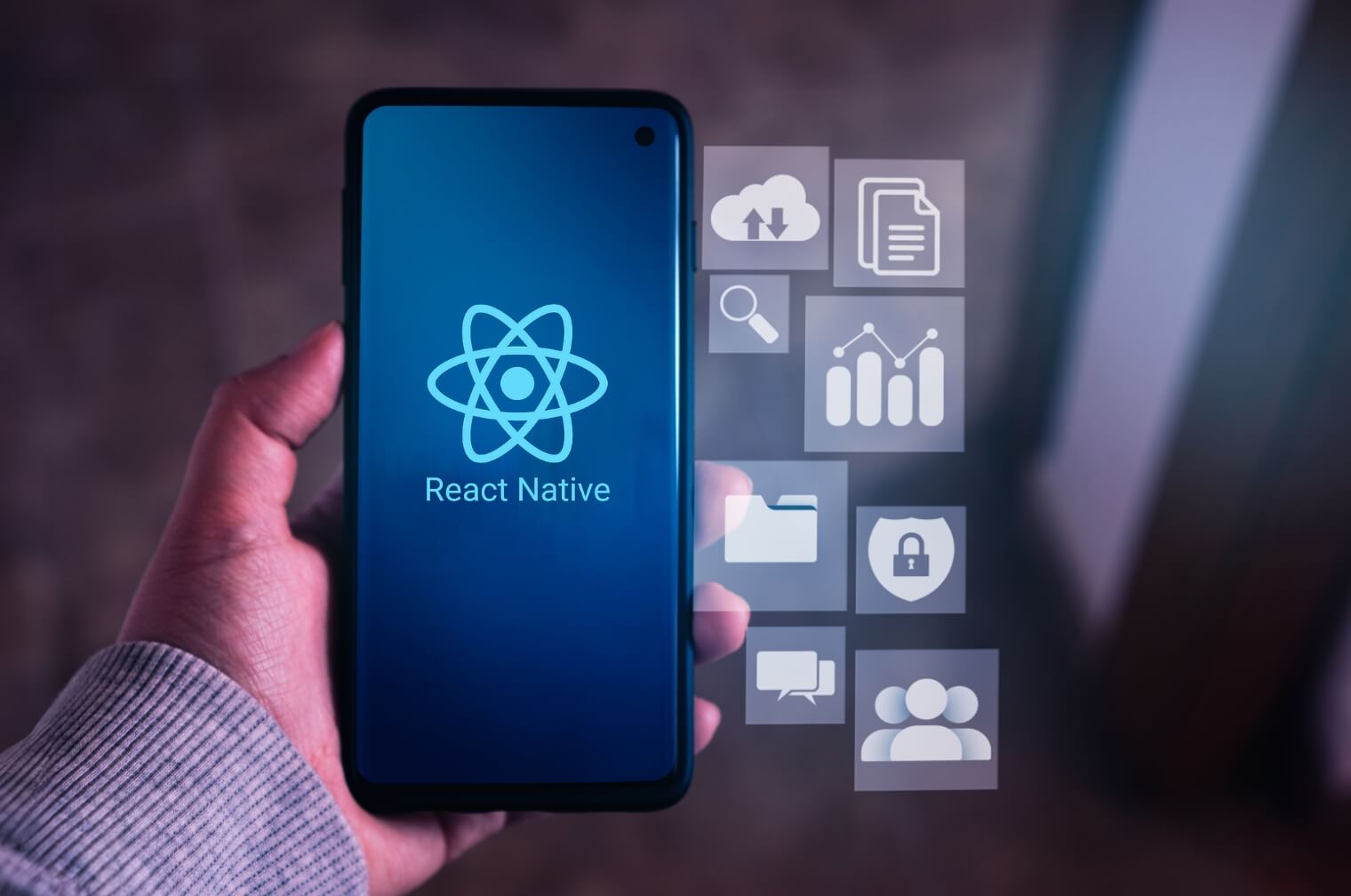Machine Learning and AI for revolution of Tech Companies are changing and streamlining businesses.
React Native framework is the future of mobile app development. It is an open-source UI software framework, using which web developers can create native and real-looking mobile applications for Android and iOS alike with the ease of using JavaScript, which is widely known and easy to work with.
It was introduced in 2015 by Facebook under an open-source project and has gradually taken over the mobile application arena, being used by industry leaders such as Instagram, Uber, Microsoft and Skype. React Native allows an individual to utilize the same code database for creating applications for varied platforms, leading to its popularity.
Difference between react and react native:
It is different from React, in the sense that, React aids in the development of the frontend of a website whereas, React Native’s advantage is that uses set of UI components to launch Android and iOS mobile applications. Both use an amalgamation of JavaScript and JSX, which is a XML-esque markup language but differ in syntax rendering.

10 power-packed reasons- why you should use the react native framework?
Cross-platform applications
A single platform for app development to maintain both Android and iOS apps creates an hassle-free and smooth experience. Different languages for different platforms can create confusion and additional work whereas, React Native’s cross-platform application only requires knowledge of native UI Libraries and APIs.
The reusability of codes is an additional benefit where the same code can be used for both web and mobile applications. Additionally, coding only once can allow reuse of codes for other platforms up to 90% enhancing its applicability.
Robust community support
React Native has a widespread community of developers providing professional support to each other. It maintains a pool of knowledge contributed by fellow developers and being backed by Facebook, it is continuously updated making it among the top most used libraries in the digital world. It also makes it easier to find new React Native developers due to its popularity and easy adaptability.
Cost and time efficient
React Native provides an affordable framework as it eliminates the need for hiring separate developers for both Android and iOS systems. A small efficient team becomes easy and more cost efficient. Also, the cost of app development on React Native is cheaper as compared to other single platform networks.
It also reduces the development time by using already loaded modules consisting of common components, allowing the developer to focus on other priorities rather than falling into the trap of redevelopment of codes.
Hot reload – quick refresh rate
An additional feature is live preview called ‘Hot Reload’, where modification of UI and upgradation to new versions can be done simultaneously while running the app. This is possible due to a quick refresh rate, saving time and increasing productivity. The modifications are immediately visible without excessive lag, making it easier for app developers to make regular changes or updates.
Simplicity is key
Easily readable codes make the entire process simpler. The usage of Facebook-made UI library to create codes makes it uncomplicated to understand and implement React JS. At the same time, both simple and complex designs can be developed easily on React Native due to its interactive and dynamic user interface.
Being compatible with native software, it seamlessly integrates with the pre-existing code and thus making it easier to execute complex apps using simple codes. The codes are mostly written in standard JavaScript and CSS, and React Native runs the app using the host platform’s JavaScript engine. This provides overall advantages without the actual need to write Java or Objective C codes.
Native app experience
Apps built using React Native utilize their own UI module, providing the feel of a native app and not a web-based experience. It uses components that are native to mobile designs and provides an identical interface for Android and iOS making it a seamless procedure. One can also build production-ready mobile applications using React Native, such as Palantir and TaskRabbit who are already using it in production for user-facing applications.
React native libraries
React native provides a number of ready-to-use libraries, processes and quick solutions to choose from. For example, ESLint can aid in checking possible errors in coding through linting process. Developers can reduce the potential of bugs in their codes by utilising testing libraries such as Enzyme and Jest. Other such similar open tools help in devising effective solutions and manage problems.
Ease of debugging
Debugging with React Native becomes easier due to a single code database across platforms. A reusable data code also enables processing a single update for both Android and iOS systems. It helps in saving time and energy as unitary bug fix can remove all the bugs in varied operating systems. Example: Console.log plugin that helps in prioritizing bugs.
Advantage of personalization
React Native enables a unique personalized experience to every individual user which allows creation of varied styles and interfaces. It gives creative freedom to designers and developers whereas they can create their own elements as well using likes of Touchable-Native-Feedback. They can even utilize pre-loaded options such as Button and Slider to make an effective interface with high customer retention rate.
Additional plug-ins
Third party plugins allow the developer to use pre-existing components instead of creating an app from scratch whereas most frameworks don’t allow them for security reasons. These make it easy to customize and flexible and allows for plug-ins to be connected with the native module with ease.
Conclusion
As mentioned above, the benefits and features of React Native make it an obvious choice for app developers across platforms. Not only does it provide a high performance, compatibility, straightforward approach and strong community support, it is also backed by a big-wig like Facebook. This enhances it durability in the long run. React Native’s GitHub repository also has thousands of developers contributing regularly making it the next big thing in the collaborative market.









